Table of Contents
OLED refers to Organic Light Emitting Diodes. The organic in 'organic light emitting diodes' refers to the organic thin films that exist between the panel and the glass screen.
Key Takeaways
- OLED TV is a television display technology based on the characteristics of organic light emitting diodes (OLED). OLED TV is a different technology than LED TV.
- OLED displays are brighter, more efficient, thinner, flexible and with higher contrast ratio and faster refresh rates than either LCD or LED.
- OLED technology is still quite hard to scale down, and so most brands’ OLED TVs typically start at 50 to 55 inches in size
- OLED displays are expensive, but their drop in price from just a few years ago is dramatic.
If you find yourself wondering why there is a significant difference between two TVs of the same size from the same brand (see 'Best Hisense TV' and 'Best Sharp TV' posts), both 4K, it could be due to the OLED technology. Best OLEDs are among the most expensive and high-quality televisions on the market today. The OLED display technology offers more flexible displays, a fast refresh rate, highest contrast ratio, efficiency, and thinner than an LCD panel.
Simply put, you can expect the best picture quality from best OLED TVs.
What Is an OLED Technology TV? Do You Need an OLED TV or Not?
As you search the internet for a television, you must have come across various TV lighting technologies, including LED TV. LED refers to a backlight installed on the LCD layer (liquid crystal display) of the television and offers the necessary illumination for the pictures.
On the other hand, you find OLEDs that don't require a backlight to illuminate the picture. OLED pixels in the OLED panel emit light on their own when you pass an electric current through them. Each pixel consists of three different OLEDs, including red, blue, and green.
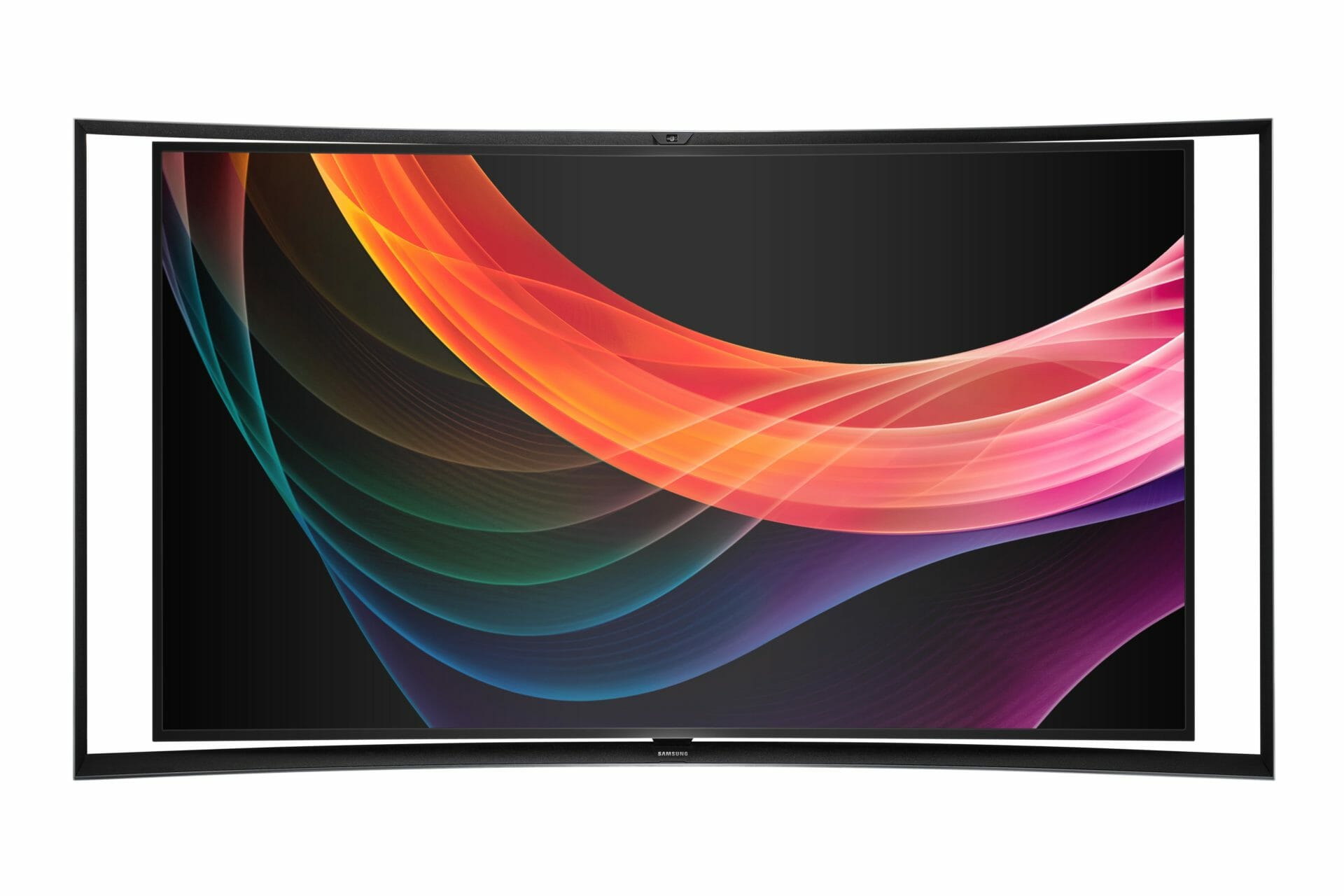
OLED panels are incredible devices with a simple design, are used in computer monitors, and come with tons of other benefits discussed below.
- Reduced power consumption. As mentioned earlier, LCDs need to use the backlight at all times. On the other hand, OLED displays only consume power on lit pixels. OLEDs power consumption is dependent on the image, but generally, they have a lower power consumption than LCDs
- Flexibility. OLED screens come with a simple design that encourages flexibility in the production of OLED televisions and OLED monitors, including foldable, bendable, and rollable displays.
- Higher contrast ratio. OLEDs offer true blacks because when a pixel is off, it doesn't emit any light. On the other hand, the backlighting is on at all times, meaning it's impossible to achieve true blacks. OLEDs contrast ratio is superior even when you compare it with the latest high-end LCDs
- Higher refresh rates. OLEDs will switch on and off faster than most LCD panels.
How Do OLED Panels Work?
All OLEDs come with 4K resolution, and some can offer 8K picture quality. However, OLED technology has nothing to do with the resolution or picture quality that a TV offers.
Like all televisions with a 4K resolution, including these best LG 4K TVs, an OLED TV will offer you 8,294,400 pixels of detail. The technology helps to make each pixel have a better display. This results from the fact that the pixels don't rely on the backlight, but instead, each pixel will light itself.
This results in blacker blacks, vibrant colors, and enhanced levels of contrast. Thus you can enjoy more lifelike images as you watch your favorite movie. Imagine what will happen if you want to watch a film in a dark room. If you are using an LED TV, you'll experience a glow in the scenes with shadows and darkness that'll spoil the picture. This is a result of the LED TV backlight that bleeds in the dark scenes. This is not the case with OLED displays.
The OLED technology also enables you to enjoy a wide range of viewing angles. That means you can watch your football game or movie from any angle without compromising picture quality.
What Is the Difference Between QLED, OLED, and LED TVs?
The difference between QLED and OLED TVs is in the display technologies.
The QLED TV technology stands for quantum dots LED. QLED TVs allow the backlight to send light through the quantum dots, resulting in the color that you see on your TV's screen. It offers darker darks, a wider color range, and more impressive visuals.
So, which is the better option between QLED and OLEDs?
The choice between the two depends on your priorities and the same goes for when it comes to different monitor types. One shortcoming about the OLEDs is that their brightness may not match that of the LCD displays. This can be an issue, especially if you are watching the TV in a bright room. Additionally, QLED TVs are cheaper than LG OLED TVs but that is not to say they are cheap.
If you want to enjoy the best possible entertainment and have a budget for it, go for the LG OLED TVs (see LG's Nanocell vs OLED). On the other hand, if you want a new TV with a high-quality display and the best picture quality but are working on a budget, the QLED TV is an excellent pick. On a related note, if you are working on a tight budget, more affordable options like the TCL TVs, Hisence, or Vizio TVs, are worth checking out.
Although the LED TV boasts of several improvements of late, the OLED TV still comes out on top. OLED uses less energy, and it is lighter and thinner. It also offers the best viewing angles.
Are OLED Screens Physically Different From LED Screens?
If the size or weight of a TV is important to the design of your home entertainment center, OLED displays definitely offer more flexibility than LED or QLED TVs.
OLED screens are much thinner because they don’t require the extra backlight of LED and QLEDs. They’re also lighter and much more flexible, so you can hang them or sit them anywhere you want, even on a curved wall, creating a really sweet aesthetic.
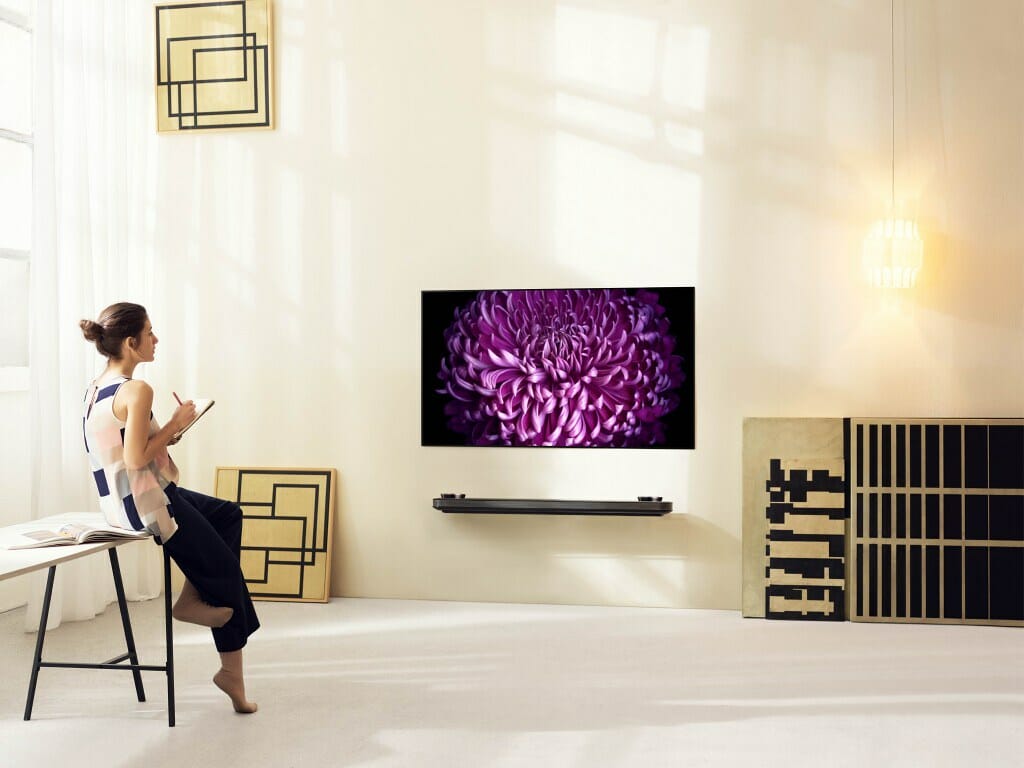
Which Is Better Between OLED and 4K?
OLED TVs offer more accurate colors since the pixels come with elements useful for every color. As such, OLED TVs offer deeper, richer, and more accurate colors than 4K TVs. When it comes to brightness, LED backlighting offers more brightness and outstanding whites. OLED TVs cannot achieve such high levels of brightness.
Additionally, LED 4K TVs feature outstanding sharpness and clarity due to the immense number of screen pixels. This ensures you enjoy the most lifelike images. OLED TVs can have notion artifacts that can cause blurriness.
OLED Colors
OLED TVs are products of the LG Electronics brand. The company uses green, red, and blue to produce the images you see on your TV screen. LCDs create colored light using the RGB color filters. On the other hand, plasmas use RGB phosphors while Samsung panel technologies, including their mobile devices, use the green, red, and blue OLED elements.
LG's OLED display uses two colors, including a sandwich of yellow and a sandwich of blue OLED materials. It then uses color filters to filter the yellow and blue light to make blue, red, and green. There is also a white element that adds a bit of brightness to the image.
Viewing Angles
OLED TVs have the best viewing angles because their pixels shine in all directions, which almost completely eliminates color, contrast, and light degradation at extreme viewing angles. So wherever you're sitting , the image won't have weird shadows or lighting differences that ruin your viewing experience. This is particularly helpful in rooms where your seating options aren't directly facing the screen.
Burn-in
Burn-in is one of the downsides that you can experience with OLED display technologies. Burn-in happens when an area of the TV's screen can have the same amount of light output as the rest of the screen. The section of the screen experiencing burn-in is the most worn-out section. This results in some sections having a bit of a shadow, or in some cases, you can see the shape that is burned in.
What you see in extreme cases of burn-in is known as image retention. Image retention will go away after you watch for some minutes. Burn-in is a permanent thing, and it happens if you watch one channel for more than eight hours. However, if you watch a variety of channels, you won't experience burn-in.
The Lifespan of OLED TVs
One of the concerns that many users have with OLED TVs is how long they'll last. The blue OLED material is a little short-lived as compared to other flavors of the tv screen.
Does that mean your OLED TV will not last beyond the fast blue rate? Not really. LG pairing the blue rate pixel with the yellow one helps to enhance its durability as evident in these best LG OLED TVs.
For most modern TVs, it is the power supply that dies before the panel.
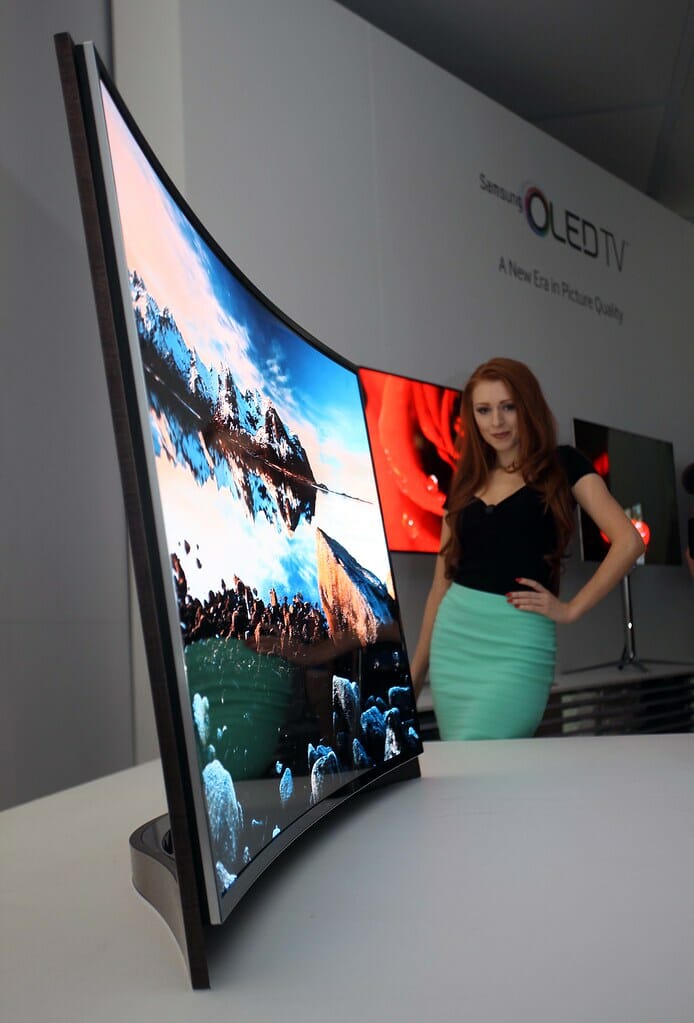
Should You Buy an OLED TV and What Should You Consider?
Besides budget, there are several other factors to consider when you want to purchase a new TV. Such factors include the screen size of your TV.
Other factors to consider include:
Refresh Rate
A fast refresh rate ensures you enjoy a smooth watching or gaming experience. A 60 Hz refresh rate is enough for watching movies and TV shows. However, it may not be enough to offer the best gaming experience. To enjoy the best gaming, you require a screen with a high refresh rate.
Most OLED TVs come with an HDMI 2.1 standard port that makes them capable of a 120 Hz refresh rate. Some OLED models support the variable refresh rate that enables the TV to change the refresh rate depending on the frame rate. Therefore, you enjoy minimal stuttering, and you also prevent screen tearing.
4K Resolution and Sound Quality
When you want to purchase an OLED TV, picture quality is a vital factor to consider. A 4K resolution ensures you enjoy the most lifelike experiences. Additionally, sound quality is equally an essential factor to consider. If you don't want to invest extra cash to purchase external speakers, you should ensure the TV's built-in speakers are quality and reliable.
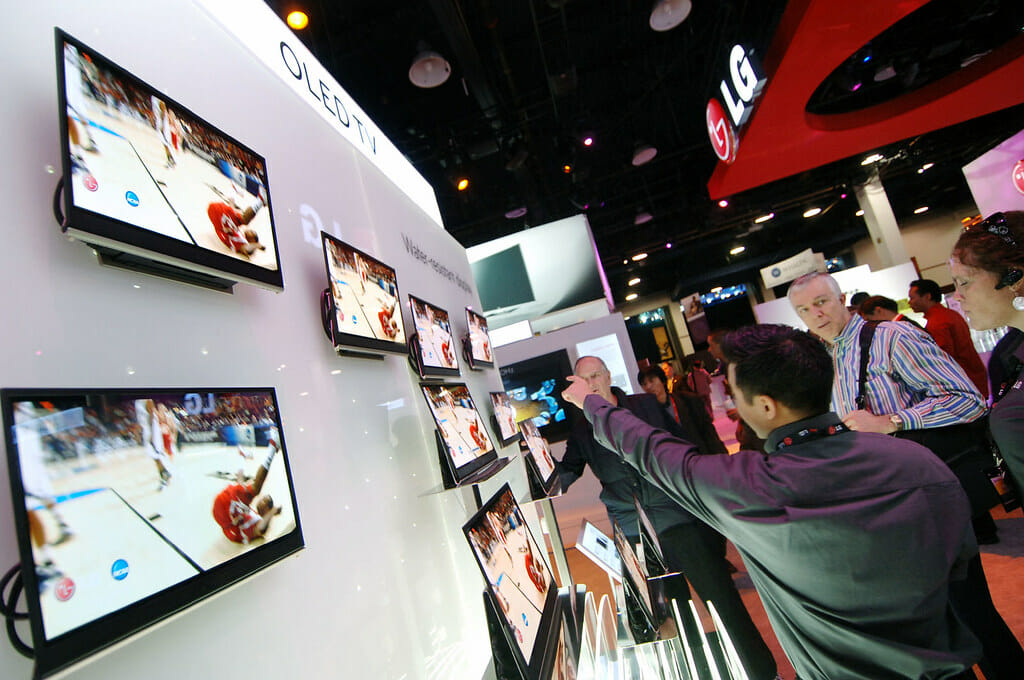
Some OLED TVs can come with the best quality visuals but have mediocre in-built speakers. It is essential that you ensure a balance between the two. Alternatively, you can go for the best quality images, compromise on sound, and purchase quality external speakers instead.
The best way to find out if the TV has quality sound is to hear it yourself. Alternatively, you can check out customer reviews to see the experience of other users.
Input Lag
The input lag should be a top priority when purchasing an OLED screen if you are a gaming enthusiast. Most OLED screens come with a fast response time which is commendable. However, the input lag is a different matter to consider.
Input lag refers to the delay between when you press the button and when you see the action on your screen. If the screen comes with a high input lag, you'll see the effects when playing fast-paced games. OLED TVs come with a gaming mode that helps reduce the input lag. An input lag of about 20 seconds is ideal, especially for gamers, but you can still find some with 10 seconds input lag.
Viwe
Final Thoughts
OLED TVs (see Toshiba TVs and Sony TVs) are reputable for offering high-quality images and other incredible features such as a fast refresh rate. When you want to buy an OLED TV, ensure you get the perfect one that fits your needs and your budget. Also make sure that you choose the right display technologies , fitted best to your needs.
FAQs
1. Is it worth buying an OLED TV?
If you want the best-looking TV image that money can buy, choose an OLED (Organic Light Emitting Diodes). Thanks to OLED TV panels design that's fundamentally different from LCD TVs, OLED TVs naturally produce perfectly inky black levels, highly saturated colors, smooth motion, and superior viewing angles.
2. Which brand has best OLED?
If you want the absolute best OLED display possible, the Sony A95K OLED is the best high-end OLED (Organic Light Emitting Diode) we've tested. Even though all OLEDs deliver very similar picture quality when watching movies in a dark room, this one stands out just a bit more than the competition, but it's also a lot more expensive.
3. Is OLED better for eyes?
OLED displays are better for your eyesight. They have more natural lighting, better color contrast, and a wider color range.
4. What is almost as good as OLED?
QLED stands for Quantum-dot Light-Emitting Diode which, in theory at least, has a great deal in common with OLED, most notably in that each pixel can emit its own light, in this case thanks to quantum dots – tiny semiconductor particles only a few nanometres in size.

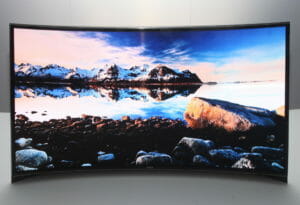

What has the best sound without extra sound bar